Walking the streets of Paris is a pleasure, but it’s also a privilege. History shows us how lucky we are to be able to experience this beautiful city in this peaceful moment in time. Stop, for instance, by one of the many ‘Ici est tombé’ plaques affixed to the city’s walls. These tablets commemorate the heroes who gave their lives eighty years ago, in the fight for the freedom that France enjoys today.

Ici est tombé… Here fell … Then the plaque lists a name, age, profession, and date of death, usually between 19th-25th August 1944: the Liberation of Paris.
It had been a long, stifling summer. The Allies had landed in Normandy back on 6th June, but it was taking longer to push eastwards than anyone expected.
Liberating Paris wasn’t actually the Allies’ intention at that time. (General Eisenhower wanted to get to Germany and definitively defeat Hitler as quickly as supply lines would allow.) But Parisians didn’t know this. What they did know, however, was that liberation seemed so close they could smell it, and that they were desperately ready for it, after living through an oppressive Nazi Occupation since 14th June 1940.
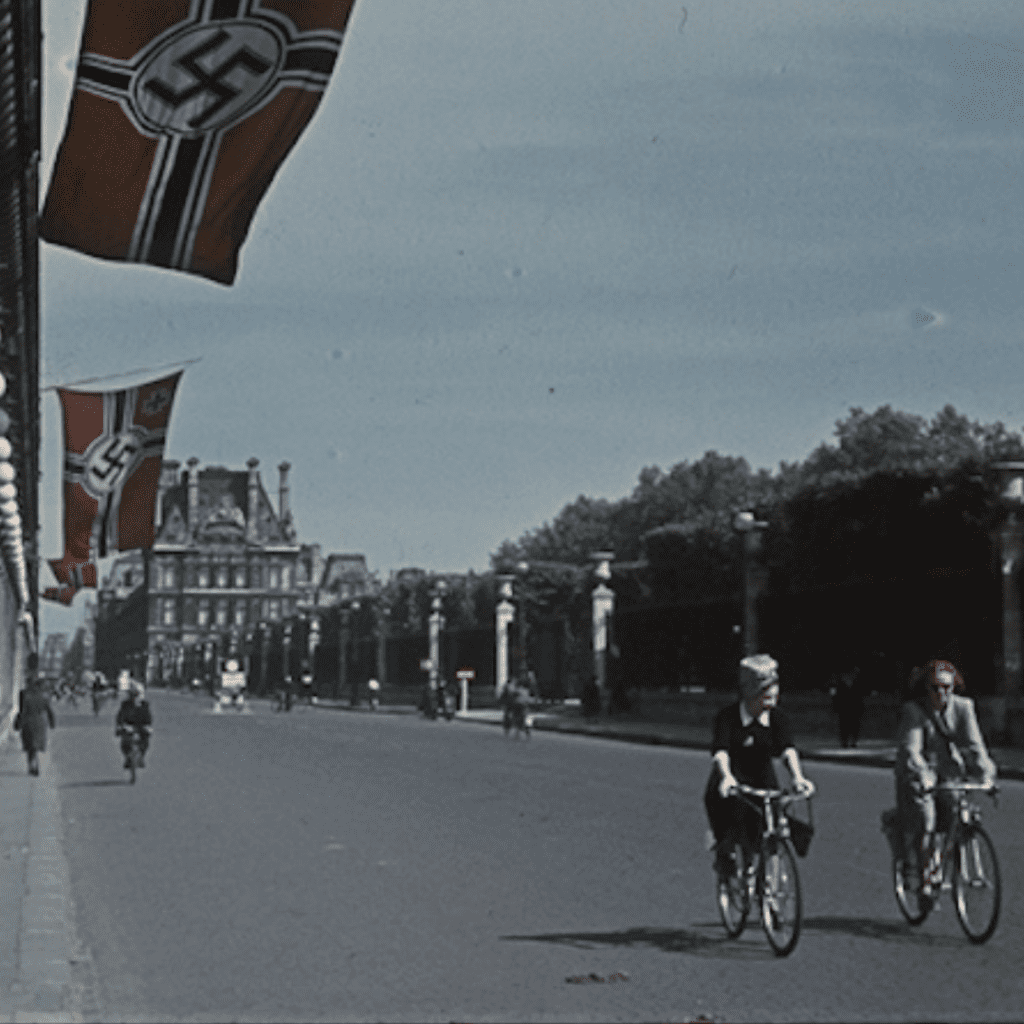
As summer intensified, the city reached boiling point, the air soupy with a feverish swirl of fear and hope.
On 11th August, the city’s railway workers went on strike. The police followed suit four days later, when the other big news was that the Allies had landed in Provence. It was now clear to all that Germany would lose the war. German command in Paris, however, dug in. On 16th August, non-essential workers began to leave town, taking with them as much as they could: cars were loaded up with stolen artwork and antiques, bottles of champagne and jars of foie gras, anything they could get their pilfering hands on. Except files, that is; Paperwork was burnt, filling the air with dark ash. In this ominous, oppressive atmosphere, the Nazis who stayed behind became more brutal than ever, hunting out an emboldened Resistance.
The next day, the propaganda press fell silent and, filling that void, rumours ran rife through the city. Nobody knew how far away the Allies were. (Fortunately, nobody knew that the Allies still weren’t planning to head to Paris, or blind panic would have set in.) The shelves and market stalls were emptying. A sense of siege and civic collapse hovered in the air. For the next day, the various Resistance networks discussed what to do. Rise up too early, before the arrival of the Allies, and a massacre could ensue. But something had to be done, for it was inevitable things were about to come to a head.
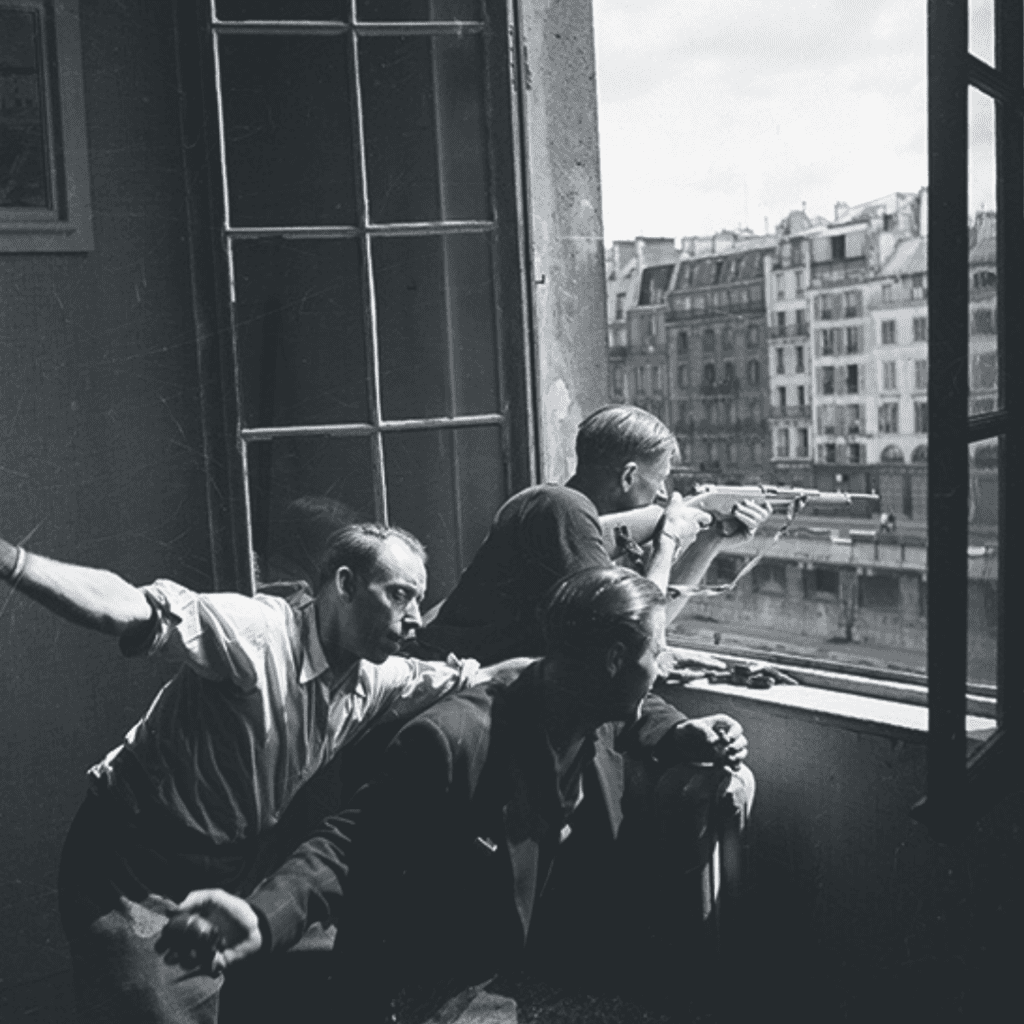
The 19th August is generally considered the official start of the Liberation of Paris, for on this morning in 1944, Resistance police officers occupied the Préfecture on Île de la Cité. Other activists claimed town halls and ministry buildings, swapping swastika flags for the tricolore, which hadn’t been seen in public for over four years. Soon, blue, white and red clothing could be seen hanging from balconies, and Parisians hummed La Marseillaise — also banned by Nazis — as they walked furtively through the streets, for it was becoming dangerous to do so. But after a day of fighting and fatalities, the Resistance controlled about half of Paris’s neighbourhoods, and counting. On 20th August, the Resistance also laid claim to the Hôtel de Ville, the heart and symbol of civic authority.
But the Germans were going nowhere. And the Allies nowhere to be seen.
Fighting continued in fits and bursts in the streets, and Parisians responded as they so often have at historic times of rebellion and revolution: by building barricades. Over the next three days, more than 600 barricades would be erected, barriers fashioned from whatever Parisians could rummage together: cobbles, burnt-out cars, tables, trees, sandbags, food trolleys, shop signs …
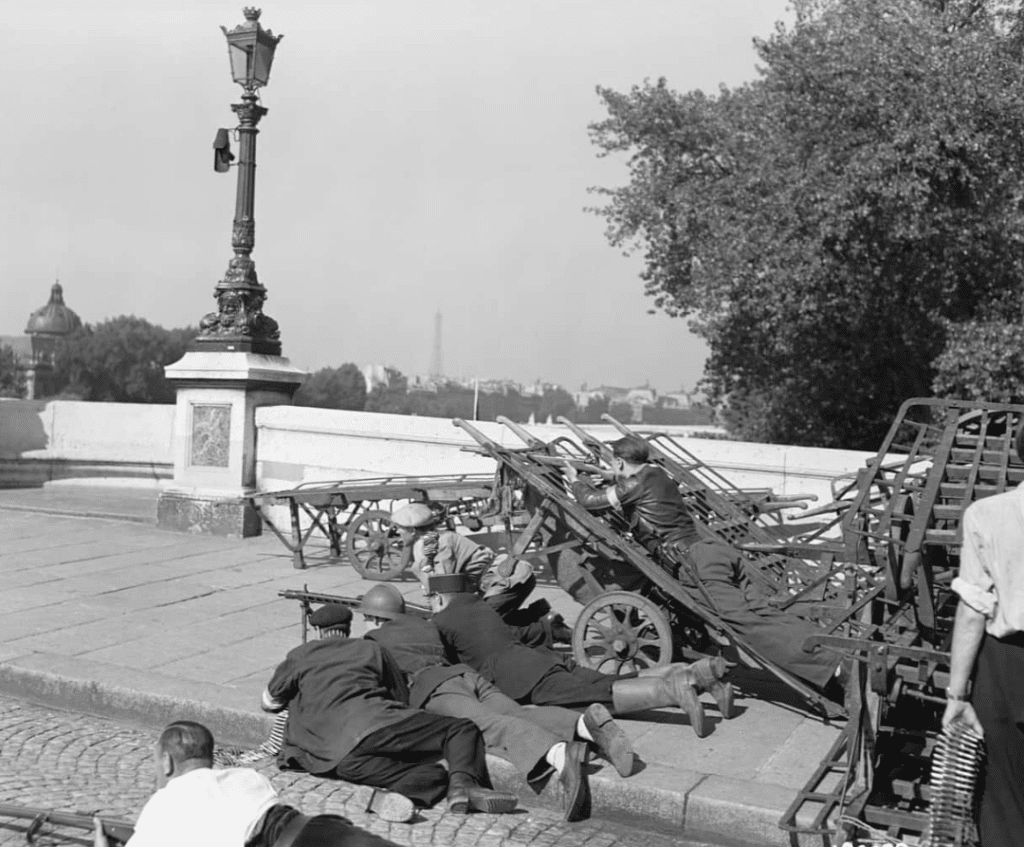
On 22nd August, Resistance newspapers were openly on sale, and posters urged Parisians to rise up against the German occupiers and take their arms. Just before things spiralled out of control, Resistance operatives had made it to Allied command, and their plea for help — and description of the dangers that Parisians were in — convinced General Eisenhower to reroute plans. The next morning, the Allies were heading to Paris.
Until the Allied tanks rolled into town, Nazi tanks prowled the Paris streets. Hitler had ordered that Paris be defended until it was little more than rubble. Parisians — whether manning the barricades with Molotov cocktails or taking nervous shelter inside — were hungry, angry, excited, and terrified. But while gas and electricity were out, the telephone networks remained in operation and, now uncensored, Parisians heard from country friends who excitedly relayed news of the Allies’ advance. Parisians could finally see a sparkle at the end of the long, dark tunnel; the City of Light would soon be re-illuminated.
On the afternoon of 24th August, the weather was as muggy and repressive as the atmosphere. But the storm was about to break. At 7pm, the 9th Company of Mechanised Infantry — known as La Nueve because 146 of its 150 men were Spanish — drove into Place d’Italie where the delirious crowds covered soldiers in kisses, thrust bottles of wine into their hands, and threw flowers and flags over their vehicles.
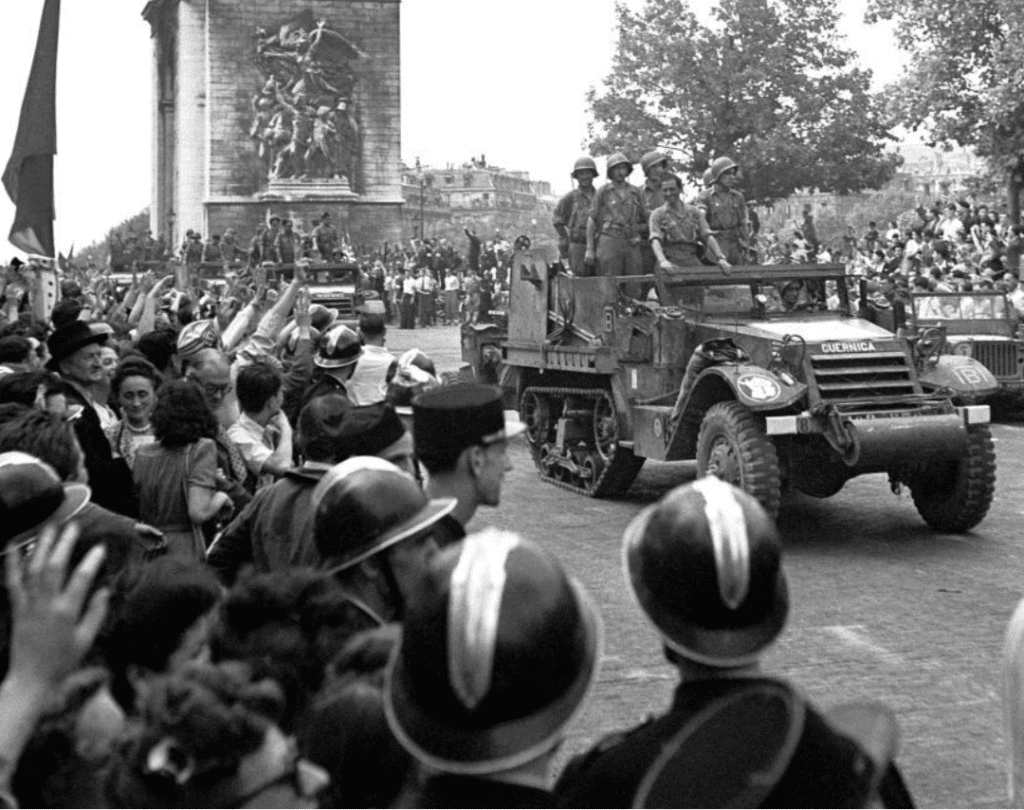
By nightfall, La Nueve was guarding the Hôtel de Ville, outside of which throngs of Parisians danced as they sang La Marseillaise. The police organised for the bells of Notre-Dame to toll for the first time in four years. The city’s other churches took their cue, and for the next hour, the city rang out and reverberated and revelled in exuberant celebration.
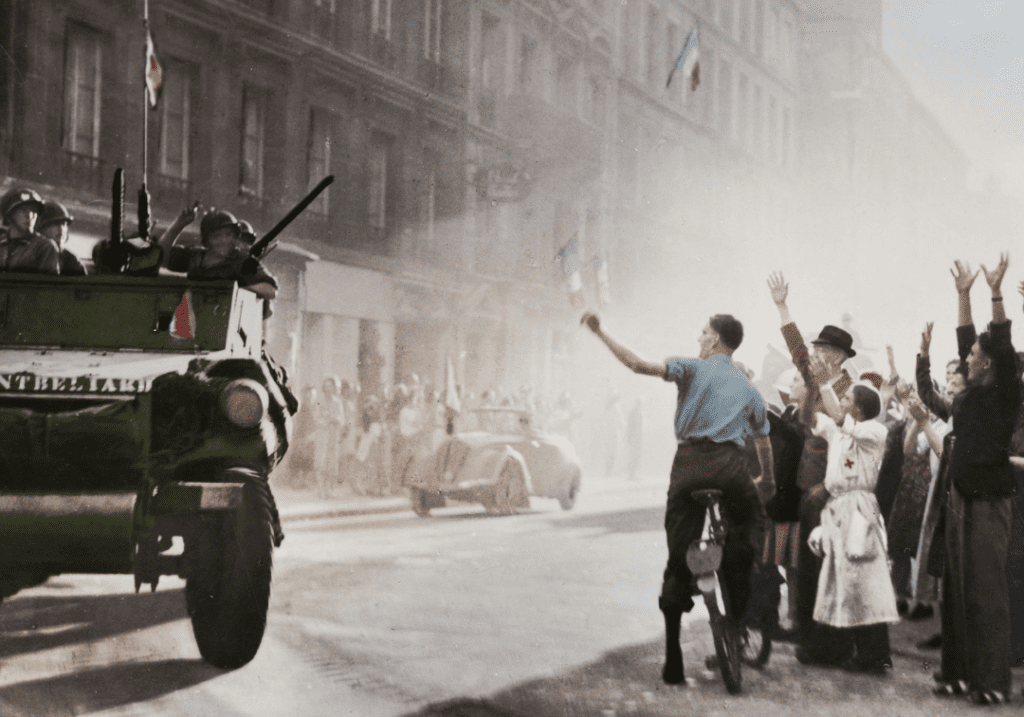
The rest of the Allies streamed into town early on the 25th August, a day when Paris partied liked it had never partied before — even though the situation was still dangerous, for many desperate, vindictive German soldiers were still at large, and many Parisians continued to fall. But, one by one, the remaining Nazi strongholds were defeated, and by the afternoon, the French flag was fluttering all over town — including atop the Eiffel Tower (below; photographer unknown).
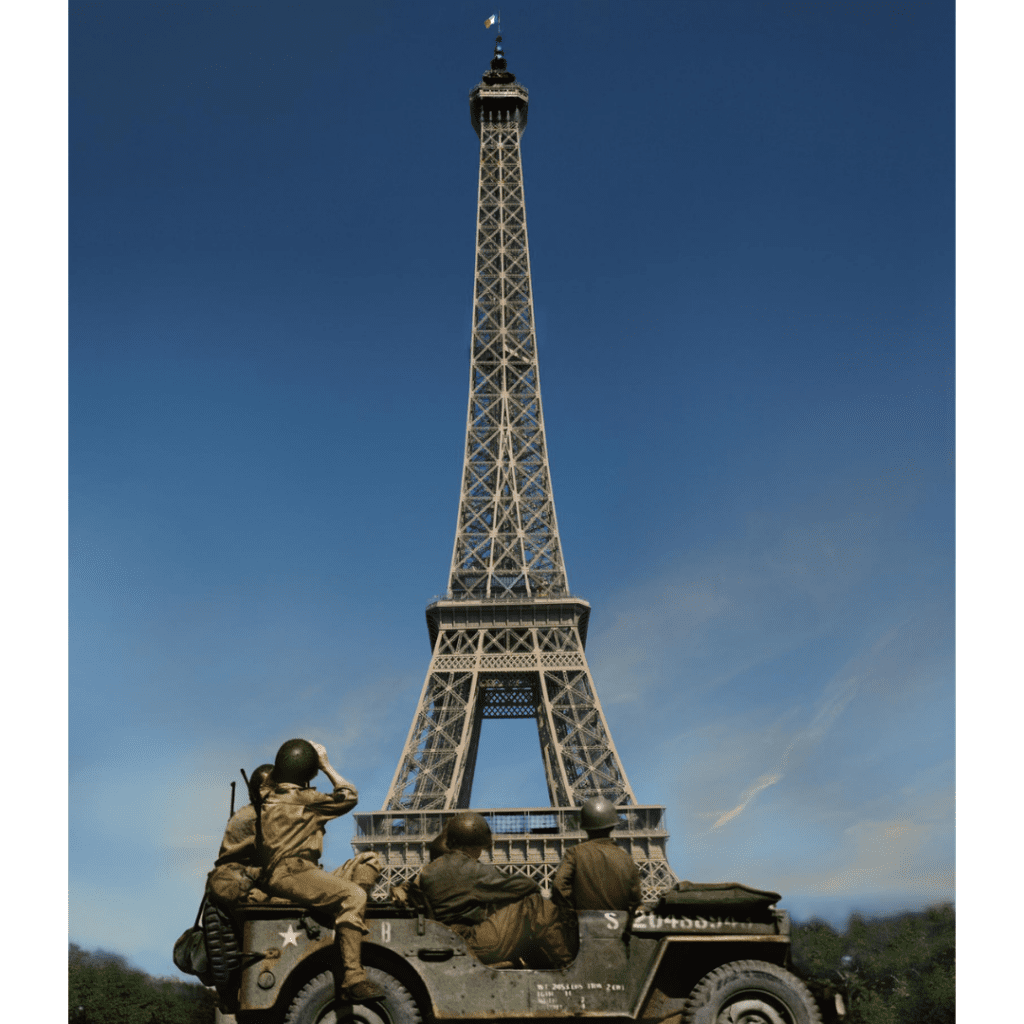
Paris was French again, free again. A liberated city in both senses of the word. Because that is the legacy of the French Revolution: a spirit of égalité and liberté that is so precious people are willing to fight for it, even die for it.
To all those heroes who have fought for Paris and have fallen it, so we can be fortunate enough to enjoy this exquisite city to this day: Merci.
For more information on the historic Liberation of Paris, read these brilliant books: Eleven Days in Paris by Matthew Cobb, The Liberation of Paris by Jean Edward Smith, and Paris ’44 by Patrick Bishop.

